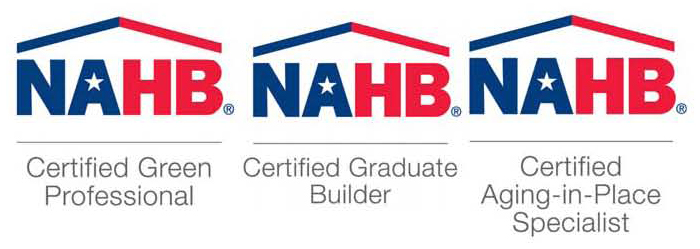What is a Green/EEM Mortgsage?
What is an Energy Efficient Mortgages?
Part 1 - In this section, we dive into the ins and outs of Energy Efficient Mortgages, how you can qualify for one, and how you can get one.
What is an Energy Efficient Mortgage?
Oftentimes, the terms "Green Mortgage" and "Energy Efficient Mortgage" are used interchangeably. The official term for this type of loan, though, is Energy Efficient Mortgage or EEM for short. Use the term EEM if you are doing research online or talking to your lender to make sure that you are getting information on the right kind of loan. The main idea behind these types of mortgages is very simple and doesn’t directly have a whole lot to do with saving the environment: Energy efficient homes use less energy and are therefore less expensive to own. People who have more efficient homes spend less per month on utility costs and theoretically should have more to spend on their monthly mortgage payments—and can therefore afford a larger mortgage.
At this time, an EEM is not a second mortgage. It is something that you get in addition to your regular mortgage or mortgage refinance and roll into your primary mortgage. That means that you only make one mortgage payment every month and there’s no additional lien on your property.
If you are purchasing or building a home that you want to add energy efficient features to, you would first get approved for a regular mortgage for the purchase. Then, you would get an EEM—to be rolled into that mortgage—to pay for energy efficient improvements.
If you are refinancing a mortgage for a home that you already own and you want to add some energy efficient renovations, you would again get the EEM to be rolled into the new mortgage.
Lastly, if you are purchasing a new home that already has energy efficient qualities, lenders recognize that your utility payments will be lower and will let you qualify for a greater overall mortgage amount. EEMs can be applied to most home mortgages.
And to make things even easier, you don’t have to do anything to qualify for an EEM. In fact, if you already qualify for your main mortgage, you will (in most cases) also qualify for an EEM. To make it even easier, especially if you are strapped for cash after the purchase of a home, you don’t have to make a larger down payment on the EEM.
EEMs are insured by the Federal Housing Authority (FHA) and the Veterans Administration (VA, for past and present military personnel) and by the conventional secondary mortgage market (Fannie Mae and Freddie Mac). You get an actual EEM in the usual places: mortgage companies, bank, savings and loan associations, and other lending companies. The lender will typically require a RESNET HERS Rating on the house to verify the energy efficiency of the improvements.
What is an example of how an EEM and how can work for you?
One of the best ways that an EEM can work for you is to increase your purchasing power and allow you to qualify for a larger mortgage. If you are purchasing a home that already meets standards of energy efficiency, you will pay lower monthly bills. As a result, a larger percentage of your income can be applied to your mortgage when it comes to calculating the total amount that you qualify for. According to the HUD website, on an FHA EEM, you can qualify for up to 33% of your debt to income ratio (that's the new mortgage payment, plus any existing loan payments vs income) with an EEM but only 29% without the EEM.
Here’s an example of how this works from the HUD website:
- If a buyer’s total monthly income is $5,000. Then, their maximum allowable monthly payment at 29% is $1,450. And the maximum mortgage that they can get is $207,300
HOWEVER, with an energy efficient home:
- The maximum allowable monthly payment for the same person at 33% is $1,650. And the maximum mortgage that they can get is $235,900. That amount makes a huge difference in the kind of house that you can afford! At the same time, your monthly bills will be lower, so you can actually afford it.
- You just bought a home worth $28,600 more for the same payment of Principal, Interest, Taxes, Insurance and Utilities. Wow!
Are there different kinds of EEMs?
Yes, there are actually three different kinds of EEMs. You will need to talk to your lender about which one makes the most sense for you:
Conventional EEM: This type of loan is offered by lenders who sell their loans to Fannie Mae and Freddie Mac. It is the most powerful of the EEMs as it allows you to borrow up to 15% of the home’s appraised value for improvements.
FHA EEM: This type of EEM is not as powerful as the conventional EEM, but you will be able to take advantage of the benefits of FHA financing. You can borrow up to 5 % of your home’s value (though not more than $8,000) or $4,000, whichever is greater
VA EEM: This version of the EEM Mortgage is for past and present military personnel and allows you to spend up to $6,000 for energy efficient upgrades when purchasing an existing home regardless of the value of the home.
Lenders can potentially offer all three types of EEMs.
So, what kinds of things does an EEM pay for?
An EEM can pay for improvements like new insulated glass Low-E windows, a new high efficiency HVAC unit with air ducts, higher R value insulation, weatherization of the house, energy efficient water heating and delivery systems, fixing or replacing a chimney or wood stove, installing active and passive solar technologies, and other improvements.
How much money can I spend on improvements?
Unfortunately, the sky is not the limit with these improvements. According to federal guidelines, there is a maximum that you can add to the mortgage. So, you will want to evaluate the cost of the improvements against the energy efficiencies and the return on your investment.
Who offers them?
EEMs are offered by most mortgage lenders through federally insured mortgage programs like FHA and VA as well as secondary mortgage market lenders like Fannie Mae and Freddie Mac. Lenders can offer conventional EEMs, FHA EEMs, and VA EEMs. All of them offer slightly different plans and you should talk to a few lenders
Who is eligible?
Basically, if you already qualify for a regular mortgage, then in most cases you already qualify for an EEM. For the EEM to be eligible for inclusion in the mortgage (different from the buyer being eligible), the actual energy efficient improvements must be cost effective. This just means that the total cost of the improvements has to be less than the total value of the energy saved over the operative life of the improvement. So, if a new insulated glass low-E window costs $300, it needs to save over $300 in energy costs of the course of its life.
How do you get an EEM?
To get an EEM, you first have to find out what improvements your home needs. Though you may have had your eye on a new central air unit and other upgrades that you think you need, you have to follow the official suggestions. These suggestions come in the form of a HERS report. HERS stands for Home Energy Rating System and it’s an evaluation of the energy efficiency a home. A trained and certified RESNET HERS Energy Rater goes to your home and completes an inspection and performs defined testing to find out just how energy efficient it is. The rater will take into account factors like insulation, windows, heating and cooling systems and local climate to give the home an overall rating. Colorado Energy Analysts is your local Certified RESNET HERS Rater.
A HERS report includes:
- An overall rating for the house as it is constructed.
- Recommendations for cost-effective energy improvements.
- Cost estimates of the price, savings, and life of energy saving improvements.
- An estimate of the house’s rating after the upgrades.
- Before and after estimates of annual energy usage and costs for the home.
- A HERS rating costs somewhere between $300 and $800 and you can finance it as part of the loan if it is not paid for by the buyer, seller, lender or real estate agent.
Once I have my HERS rating, how does it all work?
Once you have your HERS rating, you can figure out how much money you qualify for and what improvements you want to spend the money on. So, maybe you can get that new central air unit after all! Once the actual EEM has been worked out with the lender and the loan closes, the lender puts the money into an escrow account. The mortgage owner then has between 90 and 180 days (depending on who provides the EEM) to hire professionals to make the improvements. You can do some of the improvements yourself to save money, but you cannot pay yourself to make the renovations. The money is then paid out to the borrower and their contractor once an inspection takes place to verify that the proposed improvements have been made and the energy savings are in accordance with the HERS rating report.
Skip Howes
CGP - Certified Green Professional
CGB - Certified Graduate Builder
CAPS - Certified Aging in Place Specialist
RRP - Certified Lead Paint Renovator
Scott Homes, Ltd., Designers & Builders
President


Schedule An Inspection
By Phone or Email we can schedule the services you desire to begin saving money on your utility bills!
Contact Us Online
Email us at info@ColoradoEnergyAnalysts.com
© Copyright 2013-2024 - Colorado Buys Local Inc | Designed for Colorado Energy Analysts
